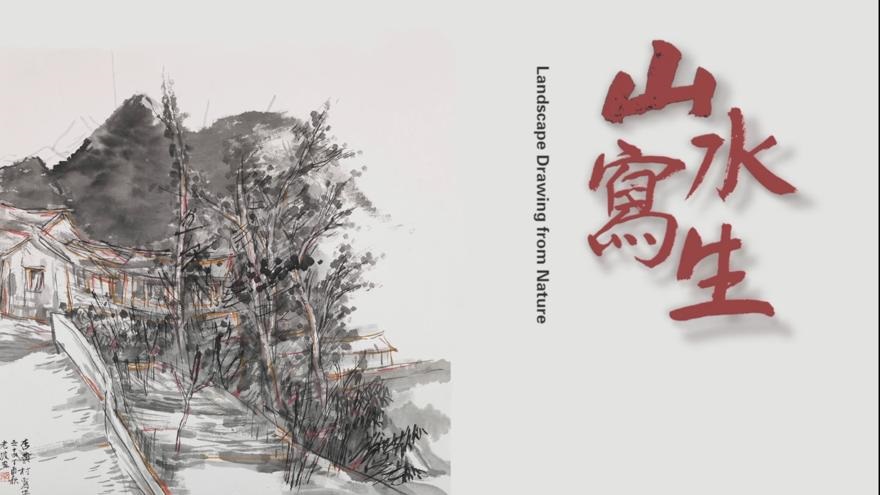
当前课程知识点:心理学之旅 > 第7章 语言与认知 > 第25讲 并非总是理性—推理与判断 > 第25讲 并非总是理性—推理与判断
假如你在饭店吃晚饭 想用微信支付餐费
If you want to use WeChat to pay for dinner in a restaurant
你就问收银员
you ask the cashier
“可以用微信支付吗”
"Do you accept WeChat payment?"
收银员答复说
the cashier replied
“我们可以接受所有的手机支付方式”
"We accept all mobile payment methods"
现在你知道你是否可以用微信支付了吗
Now do you know if you can pay by WeChat?
其实这是一个亚里士多德所提出的三段论推理
In fact, this is a syllogism proposed by Aristotle
三段论推理就是由两个假定真实的前提
Syllogism reasoning is a kind of reasoning which consists of two premises
和一个可能符合也可能不符合
that are supposed to be true and one conclusion that may or may not
这两个前提的结论所组成的推理
conform to the two premises
刚才的例子就是一个三段论推理
The example above is a syllogism reasoning
前提1 这家饭店接受所有的手机支付方式
Premise 1: This restaurant accepts all mobile payment methods
前提2 微信支付是一种手机支付方式
Premise 2: WeChat payment is a mobile payment method
结论 这家饭店接受微信支付
Conclusion: This restaurant accepts WeChat payment
这种三段论推理是演绎推理的一种形式
This syllogism is a form of deductive reasoning
在这个例子中 演绎推理很容易
In this case, deductive reasoning is easy
但在实际生活中
But in real life
当我们面对稍微复杂一些的演绎推理时
when we are faced with a little more complex deductive reasoning
我们不一定能进行正确的推理
we may not be able to carry out the correct reasoning
看下面的例子
Look at the following example
前提1 所有带有发动机的东西都需要油
Premise 1: All things with engines need oil
前提2 汽车需要油
Premise 2: Cars need oil
结论 汽车有发动机
Conclusion: Cars have engines
这个推理的过程正确吗
Is the reasoning correct?
按照逻辑规则 这个推论是错的
According to the logic rule, this reasoning is wrong
因为“所有带有发动机的东西都需要油”
because the premise "all things with engine need oil"
这个前提提供了一种可能性
provides a possibility
就是 有一些没有发动机的东西也是需要油的
that is, there are some things without engine also need oil
因而汽车需要油并不等于汽车有发动机
so that cars needs oil does not mean that cars have engines
从逻辑上说
Logically speaking
也许汽车是属于没有发动机但需要油的东西
maybe cars are something that need oil without engine
看一下这个例子就清楚了
Take a look at this example to make it clear
前提1 所有猫都有四条腿
Premise 1: All cats have four legs
前提2 我有四条腿
Premise 2: I have four legs
结论 所以我是一只猫
Conclusion: So I am a cat
这个推理跟前面的推理结构是完全一样的
This reasoning is exactly the same as the previous reasoning structure
但是我们很容易看出这个例子中的推理错误
but it is easy to see the reasoning errors in this example
在这个例子中 前提也是提供了一种可能性
In this example, the premise also provides a possibility
也就是有一些别的动物也有四条腿
that is, some other animals also have four legs
而前提2中的我有四条腿
and “I” in premise 2 has four legs
并不必然就是猫
which is not necessarily a cat
而有可能是一种有四条腿但不是猫的动物
but may be one kind of animal with four legs but not a cat
因此 这个推理过程是错的
Therefore, this reasoning process is wrong
两个推理完全一样
The two inferences are exactly the same
但为什么我们很容易发现第二个例子中的推理错误
but why are we easy to find the reasoning error in the second example
却不容易发现第一个例子中的错误呢
but not the error in the first example?
因为有一种普遍的信念偏差效应
Because there is a general belief-bias effect
也就是 人们倾向于认为
that is, people tend to think that
那些结论可信的推理过程是正确的
reasoning processes where conclusions are credible are correct
而认为那些结论不可信的推理过程是错的
and reasoning processes where those conclusions are not credible are wrong
在第一个例子中 结论可信
In the first example, the conclusion is credible
我们我们认为推理过程也是正确的
we think that the reasoning process is correct
而在第二个例子中 结论不可信
and in the second example, the conclusion is not credible
我们就认为推理过程是错的
we think that the reasoning process is wrong
这种偏差效应表明
This bias effect shows that
人们在进行演绎推理过程中
in the process of deductive reasoning
有两种心理过程发生了冲突
there are conflicts between two mental processes
第一种过程 我们运用过去的经验
In the first process, we use our past experience
提供快速的 自动化的问题解决方法
to provide fast and automatic problem-solving methods
也就是采取启发式策略
That is, heuristic strategy
另外一个过程速度较慢
The other process is slower
我们有意识地运用了形式逻辑
and we use formal logic consciously
如果让我们认真思考 不限时间
If we are allowed to think carefully without limitation of time
那么较慢的过程就会占据上风
then the slower process will prevail
就能对推理过程做出正确的判断
and we can make a correct judgment of the reasoning process
但是 如果时间紧张
However, if time is insufficient
我们就很容易运用第一种过程
we can easily use the first process
表现出更多信念偏差
to show more belief bias
因此 在进行形式逻辑推理的时候
Therefore, when conducting formal logic reasoning
经验使我们自动化地解决问题
experience enables us to solve problems automatically
却起到了负面的作用
but it plays a negative role
我们必须做出有意识的努力
We must make conscious efforts
才能避免推理错误
to avoid reasoning errors
在以上的例子中
In the above example
经验似乎起到了负面的作用
experience seems to play a negative role
但在条件推理中 经验却会起到积极的作用
But in conditional reasoning, experience will play a positive role
条件推理就是人们利用条件性命题进行的推理
Conditional reasoning is the reasoning that people use conditional propositions
例如 “如果明天下雨 球赛就停止”
For example, "If it rains tomorrow, the game will stop."
明天有雨 所以球赛停止
There will be rain tomorrow, so the game will stop
心理学家发现
Psychologists have found that
在条件推理中容易发生一种偏差
a kind of bias easily occurs in conditional reasoning
大家看 这是四张卡片
Here are four cards
每张卡片都有两面
Each card has two sides
现在看到的是四张卡片的其中一面
Now we see one side of the four cards
分别是A D 4 7
A, D, 4, 7
这些卡片可能遵守这样的规则
These cards may follow the rule that
如果卡片一面是元音字母 那么另一面一定是偶数
if one side of the card is a vowel, the other must be an even number
问题是 要证明这些卡片是否符合这个规则
The question is: to prove whether these cards conform to this rule
必须翻看哪些卡片呢?
which cards must be viewed?
这就是著名的沃森选择任务
This is the famous Wason selection task
在研究中 只选择A的被试占33%
In the study, 33% of the subjects selected only A
选择A和4的被试占46%
46% choose A and 4
选择A是对的
It's right to select A
因为一面是元音 就必须要看一下另一面是不是偶数
because one side is a vowel, you have to see if the other side is even
为什么选择4呢
Why select 4?
这是因为我们想看一下4的反面是不是元音字母
This is because we want to see if the reverse side of 4 is a vowel
如果是的话 就证明了规则
and if so, it proves the rule
但实际上 选择4则是没必要的
But in fact, it is unnecessary to select 4
因为无论4的反面是不是元音字母
because no matter whether the reverse side of 4 is vowel or not
都是跟规则一致的
it is consistent with the rules
除了A 其实还应该选择7
In addition to A, you should also select 7
如果7的反面是辅音字母
If the reverse side of 7 is a consonant
跟规则就是一致的
it is consistent with the rule
但如果7的反面是元音字母
but if the reverse side of 7 is a vowel
则违反了规则
it violates the rule
因此7是必须要翻看的
So 7 is something we have to view
你选对了吗
Do you make the right selection?
实际上 在研究中正确选择了A和7的被试只有4%
In fact, only 4% of the subjects correctly selected A and 7 in the study
这个研究证明了一种推理中经常出现的偏差
This research proves a kind of bias that often appears in reasoning
叫证实偏差
which is called confirmation bias
也就是在条件推理中
That is to say, in conditional reasoning
人们总是倾向于证实某种假设或推测
people always tend to confirm some hypothesis or conjecture
而很少去证伪它们
but seldom falsify them
心理学家发现
Psychologists have found that
如果是用这种跟日常生活无关的任务进行条件推理
if we use this task which has nothing to do with our daily life for conditional reasoning
就很容易发生证实偏差
confirmation bias is easy to appear
但如果这种任务跟日常生活经验有关
but if this task is related to our daily life experience
犯错误的概率就会低很多
the probability of making mistakes will be much lower
比如这样一项任务
For example, this is a task
这是四张卡片 每张卡片都有两面
These are four cards, each card has two sides
现在看到的是四张卡片的其中一面
Now we see one side of the four cards
分别是“喝啤酒”“喝可乐”22 16
namely "drink beer", "drink coke", 22, 16
这些卡片的规则是
The rule of these cards is that
如果要喝啤酒 必须满19岁
if you want to drink beer, you must be more than 19 years old
那么请你思考一下
So please think about
要证明这些卡片是否符合这一规则
to prove that these cards conform to this rule
必须翻看哪些卡片呢
which cards you have to view?
在这项任务中
In this task
翻看“喝啤酒”是没问题的
it's OK to select "drinking beer"
另一个呢
What about the other one?
大家可能已经想到了 应该翻看16
You may have thought that you should select 16
因为如果16的反面是喝啤酒 就违反了规则
because if the opposite side of 16 is drinking beer, it violates the rules
这项任务跟刚才的卡片选择任务其实是一样的
This task is actually the same as the card selection task just now
但这项任务的正确率达到74.1%
but the accuracy of this task is 74.1%
远远高于刚才的任务成绩
far higher than the task score just now
心理学家认为
Psychologists believe that
这种条件推理任务如果跟我的生活经验有关
if this kind of conditional reasoning task is related to our life experience
就不容易犯推理错误
it is not easy to make reasoning mistakes
我们的高级认知过程还包括判断
Our advanced cognitive process also includes judgment
判断是我们形成看法
Judgment is the process by which we form opinions
得出结论以及对事件和人作出评论性评估的过程
draw conclusions and make critical assessments of events and people
曾获得诺贝尔经济学奖的著名心理学家西蒙
Simon, a famous psychologist who has won the Nobel Prize in economics
提出人类的思维过程受有限理性的指导
put forward that the process of human thinking was guided by bounded rationality
也就是说
In other words
我们的判断过程可能不像我们以为的那样理性
our judgment process may not be as rational as we think
另外一位获得过诺贝尔经济学奖的心理学家卡尼曼
Kahneman, another psychologist who has won the Nobel Prize in economics
和他的好友兼同事特沃斯基
and Tversky, his good friend and colleague
他们发现 人类在进行判断时
found that when people make judgments
经常根据一些非正式的经验
they often make judgments based on the shortcuts
所提供的捷径进行判断
provided by some informal experience
这就是启发式策略
which was the heuristic strategy
可得性启发式是一种常见的启发式策略
Availability heuristics is a common heuristic strategy
就是人们会根据出现在头脑中的
that is, people will make judgments based on
现成的例证做出判断
the ready-made examples that appear in the mind
例子是现成的 很容易想到
The examples are ready-made, and it is easy to think of
我们就容易认为这种事件经常发生
therefore we can easily think that this kind of event occurs frequently
比如
For example
如果问美国的大学生
if you ask American college students
哪所大学的学生自杀率最高
which university has the highest suicide rate
很多人就说是康奈尔大学
many of them answer Cornell University
但实际上
But in fact
康奈尔大学学生的自杀率在美国
the suicide rate of Cornell University Students in the United States
只算是中下水平
is only at the lower middle level
为什么还背负着“自杀学校”的恶名呢
Why do they still bear the reputation of "suicide school"?
其实主要问题是
The main problem is that
康奈尔大学经常有学生
Cornell University students often jump
从附近一座横跨峡谷的桥上跳下去
from a nearby bridge across the canyon
所以这座桥被称作自杀桥
so the bridge is called the suicide bridge
这种自杀方式很容易引起更多关注
This form of suicide is likely to attract more attention
所以 当谈到大学生自杀
So when it comes to college students' suicide
大家总是很容易想到康奈尔大学
it's easy for many people to think of Cornell University
所以就误以为康奈尔大学的自杀率是最高的
so they mistakenly think that Cornell University has the highest suicide rate
这就是可得性启发式
This is the availability heuristic
在附加学习材料中
In the additional learning materials
我们还准备了“代表性启发式”
we have also prepared materials of "representative heuristic"
和“锚定启发式”的材料
and "anchor heuristic"
大家可以去学习
which you can learn
好 今天的内容就讲完了
OK, that's all for today
现在回顾一下主要内容
Now let's review the main content
在三段论推理中
In syllogism reasoning
经常发生信念偏差效应
belief bias effect often occurs
也就是人们倾向于认为
that is, people tend to think that
那些结论可信的推理过程是正确的
the reasoning process with reliable conclusions is correct
在条件推理中
In conditional reasoning
人们容易发生证实偏差
people are easy to have confirmation bias
但如果条件推理的内容与生活经验有关
but if the content of conditional reasoning is related to life experience
证实偏差发生概率就比较低
the probability of confirmation bias is relatively low
另外 在判断过程中
In addition, in the process of judgment
人们经常利用各种启发式策略
people often use various heuristic strategies
下次课我们将进入第8章动机
Next time, we will turn to the eighth chapter, motivation
首先介绍的是
The first part is about
人类普遍行为的动力到底来自哪里
where the motivation of human universal behavior comes from?
好 下次再见
OK, see you next time
-第2讲 理性之光—心理学是一门科学
-第3讲 寻找事实—心理学的研究方法
-第1章 作业
-第4讲 捷足先登—冯特创立心理学
-第5讲 心灵深处—弗洛伊德的精神分析理论
-第6讲 横空出世—华生与行为主义
-第7讲 融合与发展—心理学的新趋势
-第2章 作业
-第8讲 认知的第一步—感觉及其规律
-第9讲 获取信息—感觉的功能
-第10讲 超越元素—知觉的特性
-第11讲 感知三维世界—深度知觉
-第3章 作业
-第12讲 解决信息混乱—意识的功能
-第13讲 并不平静—睡眠
-第14讲 异常状态—梦、催眠与冥想
-第4章 作业
-第15讲 行为的变化—什么是学习?
-第16讲 建立联结—经典条件作用
-第17讲 行为的塑造—操作条件作用
-第18讲 不必参与的学习—观察学习
-第5章 作业
-第19讲 经验的积累—什么是记忆?
-第20讲 永不消逝的信息—长时记忆
-第21讲 非故意的谎言—记忆重构
-第22讲 转瞬即逝—短时记忆和感觉记忆
-第6章 作业
-第23讲 人类的荣耀—语言
-第24讲 策略与定式—问题解决
-第25讲 并非总是理性—推理与判断
-第7章 作业
-第26讲 行为的动力—动机及其来源
-第27讲 吃还是不吃?—饮食的生理与心理
-第28讲 追求成功的动力—成就动机
-第8章 作业
-第29讲 生命的色彩—情绪及其功能
-第30讲 生命色彩的解读—情绪理论
-第31讲 情绪双刃剑—压力
-第32讲 改变自己—压力应对
-第33讲 创造灿烂人生—幸福有方法
-第9章 作业
-第34讲 你有多聪明?—智力及其测量
-第35讲 因素及其超越—智力理论
-第36讲 遗传、教育、文化—智力的族群差异
-第10章 作业
-第37讲 千人千面—人格的概念和特征
-第38讲 描述差异—类型说与特质说
-第39讲 了解人格—人格测验.
-第40讲 膨胀的自我—自尊运动
-第11章 作业
-期末考试

